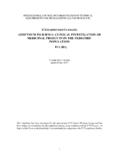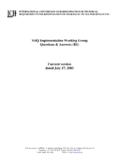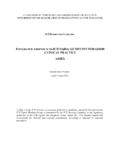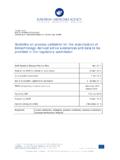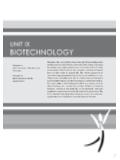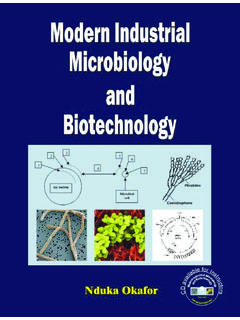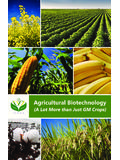Transcription of ICH HARMONISED TRIPARTITE UIDELINE
1 INTERNATIONAL CONFERENCE ON HARMONISATION OF TECHNICAL. REQUIREMENTS FOR REGISTRATION OF PHARMACEUTICALS FOR HUMAN. USE. ICH HARMONISED TRIPARTITE GUIDELINE. VIRAL SAFETY EVALUATION OF biotechnology . PRODUCTS derived FROM CELL LINES OF HUMAN OR. ANIMAL ORIGIN. Q5A(R1). Current Step 4 version dated 23 September 1999. This Guideline has been developed by the appropriate ICH Expert Working Group and has been subject to consultation by the regulatory parties, in accordance with the ICH. Process. At Step 4 of the Process the final draft is recommended for adoption to the regulatory bodies of the European Union, Japan and USA.
2 Q5A(R1). Document History First History Date New Codification Codification November 2005. Q5A Approval by the Steering Committee under Step 2 1 December Q5A. and release for public consultation. 1995. Q5A Approval by the Steering Committee under Step 4 5 Q5A. and recommendation for adoption to the three March 1997. ICH regulatory bodies. Current Step 4 version Q5A Approval by the Steering Committee of the post 23 Q5A(R1). Step 4 editorial corrections. September 1999. VIRAL SAFETY EVALUATION OF biotechnology PRODUCTS. derived FROM CELL LINES OF HUMAN OR ANIMAL ORIGIN.
3 ICH HARMONISED TRIPARTITE Guideline Having reached Step 4 of the ICH Process at the ICH Steering Committee meeting on 5 March 1997, this guideline is recommended for adoption to the three regulatory parties to ICH. (This guideline includes the typographic correction on Table A-1: the Genome of the Reovirus 3 is RNA, agreed by the Steering Committee on 23 September 1999). TABLE OF CONTENTS. I. INTRODUCTION ..1. II. POTENTIAL SOURCES OF VIRUS A. Viruses That Could Occur in the Master Cell Bank (MCB)..2. B. Adventitious Viruses That Could Be Introduced during III.
4 CELL LINE QUALIFICATION: TESTING FOR VIRUSES ..3. A. Suggested Virus Tests for MCB, Working Cell Bank (WCB) and Cells at the Limit of in vitro Cell Age Used for 1. Master Cell 2. Working Cell Bank ..3. 3. Cells at the Limit of in vitro Cell Age Used for Production ..3. B. Recommended Viral Detection and Identification Assays ..4. 1. Tests for 2. In vitro Assays ..4. 3. In vivo Assays ..4. 4. Antibody Production Tests ..4. C. Acceptability of Cell Lines ..5. IV. TESTING FOR VIRUSES IN UNPROCESSED BULK ..5. V. RATIONALE AND ACTION PLAN FOR VIRAL CLEARANCE.
5 STUDIES AND VIRUS TESTS ON PURIFIED VI. EVALUATION AND CHARACTERISATION OF VIRAL CLEARANCE. A. The Choice of Viruses for the Evaluation and Characterisation of Viral Clearance ..8. 1. "Relevant" Viruses and "Model" Viruses ..8. 2. Other Considerations ..9. B. Design and Implications of Viral Clearance Evaluation and Characterisation Studies ..9. i Viral Safety Evaluation of Biotech Products 1. Facility and 9. 2. Scaled-Down Production 10. 3. Analysis of Step-Wise Elimination of 10. 4. Determining Physical Removal versus Inactivation .. 10. 5. Inactivation Assessment.
6 10. 6. Function and Regeneration of 11. 7. Specific Precautions .. 11. C. Interpretation of Viral Clearance Studies .. 12. D. Limitations of Viral Clearance 13. E. Statistics .. 14. F. Re-Evaluation of Viral 14. VII. 14. VIII. GLOSSARY .. 14. Table 1: Virus Tests to Be Performed Once at Various Cell 17. Table 2: Examples of the Use and Limitations of Assays Which May Be Used to Test for 18. Table 3: Virus Detected in Antibody Production 19. Table 4: Action Plan for Process Assessment of Viral Clearance and Virus Tests on Purified Bulk .. 20. APPENDIX 1 Products derived from Characterised Cell Banks which Were Subsequently Grown in vivo.
7 21. APPENDIX 2 The Choice of Viruses for Viral Clearance Studies .. 22. Table A-1 : Examples of Viruses Which Have Been Used in Viral Clearance Studies .. 23. APPENDIX 3 Statistical Considerations for Assessing Virus Assays .. 24. Probability of Detection of Viruses at Low Concentrations .. 24. APPENDIX 4 Calculation of Reduction Factors in Studies to Determine Viral Clearance .. 26. APPENDIX 5 Calculation of Estimated Particles per Dose .. 27. ii VIRAL SAFETY EVALUATION OF biotechnology PRODUCTS derived FROM. CELL LINES OF HUMAN OR ANIMAL ORIGIN. I.
8 INTRODUCTION. This document is concerned with testing and evaluation of the viral safety of biotechnology products derived from characterised cell lines of human or animal origin ( , mammalian, avian, insect) and outlines data that should be submitted in the marketing application/registration package. For the purposes of this document the term virus excludes nonconventional transmissible agents like those associated with Bovine Spongiform Encephalopathy (BSE) and scrapie. Applicants are encouraged to discuss issues associated with BSE with the regulatory authorities.
9 The scope of the document covers products derived from cell cultures initiated from characterised cell banks. It covers products derived from in vitro cell culture, such as interferons, monoclonal antibodies and recombinant DNA- derived products including recombinant subunit vaccines, and also includes products derived from hybridoma cells grown in vivo as ascites. In this latter case, special considerations apply and additional information on testing cells propagated in vivo is contained in Appendix 1. Inactivated vaccines, all live vaccines containing self-replicating agents, and genetically engineered live vectors are excluded from the scope of this document.
10 The risk of viral contamination is a feature common to all biotechnology products derived from cell lines. Such contamination could have serious clinical consequences and can arise from the contamination of the source cell lines themselves (cell substrates) or from adventitious introduction of virus during production. To date, however, biotechnology products derived from cell lines have not been implicated in the transmission of viruses. Nevertheless, it is expected that the safety of these products with regard to viral contamination can be reasonably assured only by the application of a virus testing program and assessment of virus removal and inactivation achieved by the manufacturing process, as outlined below.
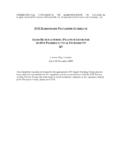
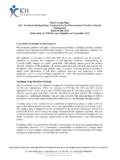
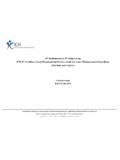
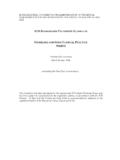
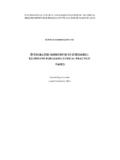
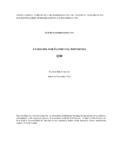
![[ICH E2F] [EXAMPLE DSUR – PHASE III …](/cache/preview/1/3/5/f/e/1/c/f/thumb-135fe1cf2cdb82799c462ad0ea089c48.jpg)
